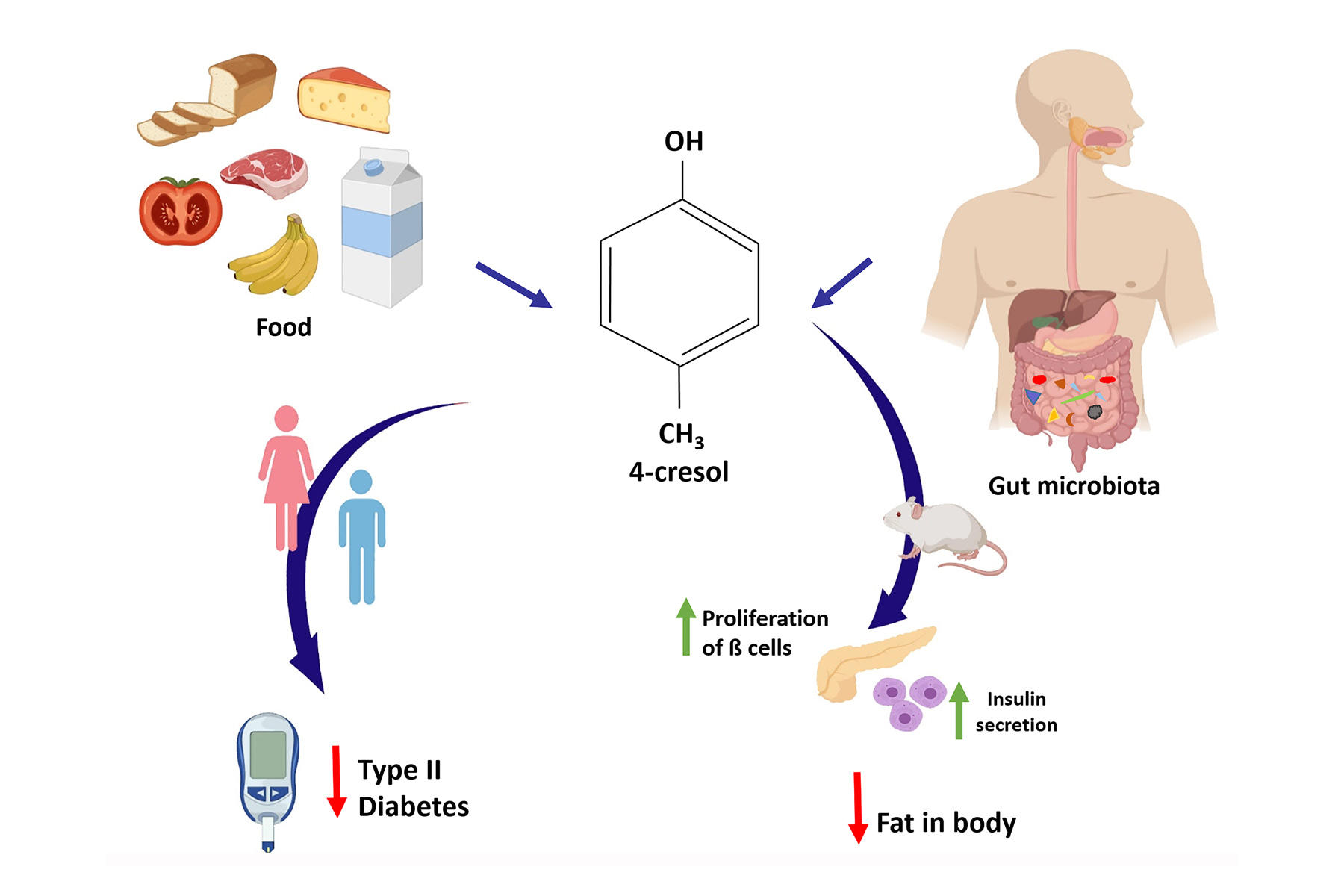Bacterial Flora Offers Promising Therapeutic Opportunities for Type 2 Diabetes
SOM faculty member and geneticist Dr. Pierre Zalloua is one of the leading authors of a study on the protective effects of metabolite 4-Cresol in Type 2 diabetes.
A paper on a promising treatment for type 2 diabetes (T2D) – The Natural Metabolite 4-Cresol Improves Glucose Homeostasis and Enhances β-Cell Function – co-authored by renowned geneticist and faculty member of the Gilbert and Rose-Marie Chagoury School of Medicine Pierre Zalloua and his colleague Dominique Gauguier from Inserm/Université de Paris, was published today in the peer-reviewed scientific journal Cell Reports.
The study findings go to show that an organic compound, the metabolite 4-Cresol, naturally produced by the intestinal flora and also found in certain foods, has protective effects against T2D as well type 1 diabetes (T1D), in particular by stimulating the growth of beta cells in the pancreas that produce insulin.
The researchers first carried out a metabolic profiling study to identify all types of metabolites present in the body from the blood samples of 148 adults, some of whom were diabetic, in order to identify markers that may be associated with the development of the disease.
“We designed the study in a way that allowed us to compare and contrast the extreme edges of the diabetes spectrum: We compared the metabolomic profiles (a huge number of metabolites) of subjects who were very healthy and without any T2D-related susceptibility factors vs patients who were non-obese but who developed diabetes at an early age. That is how we discovered this metabolite that was significantly abundant in healthy subjects,” said Dr. Zalloua.
Working from models of diabetes and obesity in rats and mice, the researchers then tested the effects of 4-Cresol on the clinical signs of diabetes and on the functioning of beta cells in the pancreas, which secrete the hormone insulin that maintains the balance of the level of glucose contained in the blood.
Through chronic treatment of low-concentration 4-Cresol in mice, the researchers noted a reduction in obesity and in fat accumulation in the liver, as well as an increase in pancreatic mass, stimulation of insulin secretion and proliferation of pancreatic beta cells.
Once designated as adult-onset diabetes, T2D – the most common type of diabetes – is occurring more at a younger age. Whereas in the case of T1D, the pancreas cannot produce insulin to help maintain blood sugar levels, in T2D the body is unable to effectively use the insulin produced. As a result, in both cases the pancreas works harder to make more insulin. When it cannot keep up, glucose builds up in the blood, leading to a high level of triglycerides or fat in the bloodstream and a hardening of the arteries.
According to the International Diabetes Federation, the MENA region has the highest prevalence of diabetes in adults and rising. Earlier studies by Dr. Zalloua in Lebanon showed that T2D is increasing at an alarming rate, reaching levels up 20 percent in the adult population.
The researchers’ immediate goal is to study the possibilities of modulating the intestinal flora to restore the production of 4-cresol in diabetic patients. To do this, they will need to identify the bacteria that naturally produce this metabolite, and then define which could prove to be potential, safe and effective treatments for insulin deficiency syndromes.
“Translating the research findings into a drug for diabetic patients entails a well-established process. A series of tests will still need to conducted, on toxicity and human islet cells for instance among many others, before the critical trial phase is to begin, but this novel finding opens the door for many more drug discoveries using our approach,” concluded Dr. Zalloua.

